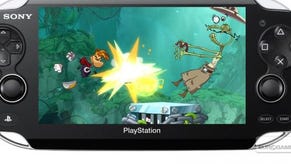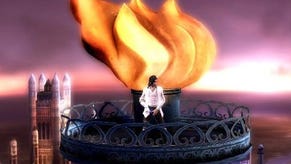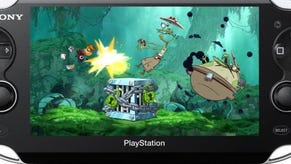Michael Jackson: The Experience
Do you remember the time?
20 years ago, age 11, I had a 'Michael Jackson experience'. Come the morning of my 12th birthday in October 1990, he was the first thing I saw as I sleepily opened my eyes and gasped.
It all started in a branch of Microbyte (remember those?) in Nottingham's Broadmarsh Centre. At weekends I'd pester my parents to take me there so I could see what new games had arrived (a thrillingly unpredictable event, since imported Japanese games would frequently arrive before the UK games press had reported on them. Imagine that).
I had so many pivotal gaming 'first experiences' in this store (the hill run in level two of Strider; cape flight in Super Mario World), it really ought to be designated an important historical site with its own commemorative kitchenware. Knives at the very least, being Nottingham.
On this particular day I was still a square-eyed Amiga nerd. Michael Jackson's Moonwalker on Mega Drive changed that within the first few bars of its mesmerising synth remix of Smooth Criminal.
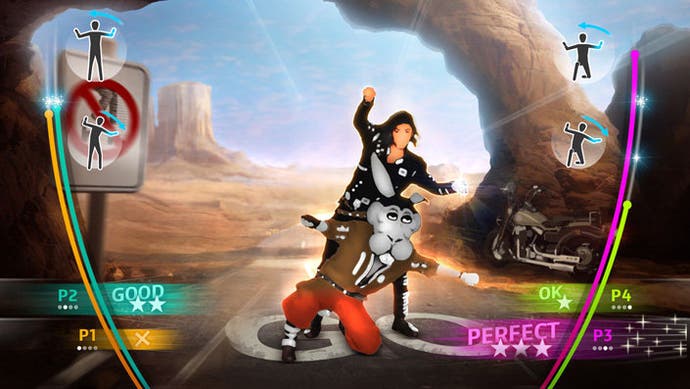
It was a perfect gaming storm of new hardware, my then favourite album (Bad), and an artist whose catalogue of preposterously idiosyncratic dance moves became the game itself.
With the console hooked up to the shop's sound system it felt like the most exciting thing ever. Fast-forward to my birthday and I woke to find my dad brandishing a Japanese Mega Drive and my mum waving a copy of the game in my ecstatic mug.
With its hero squealing priapically while thrusting his groin in front of sobbing children, it's hard to imagine Moonwalker being made in the same way today. Yet despite being genres and generations apart, the essence of SEGA's title and Michael Jackson: The Experience is the same: a fascination with and celebration of the late King of Pop's moves and music.
The other way of looking at Ubisoft's title is to say that it's simply Just Dance: Jacko. The shallow content, garish neon-stained choreography, simplistic gameplay and bare-bones presentation of the series have all made the transition. And, like Just Dance and its sequel, it's also shamelessly enjoyable, euphoric fun.
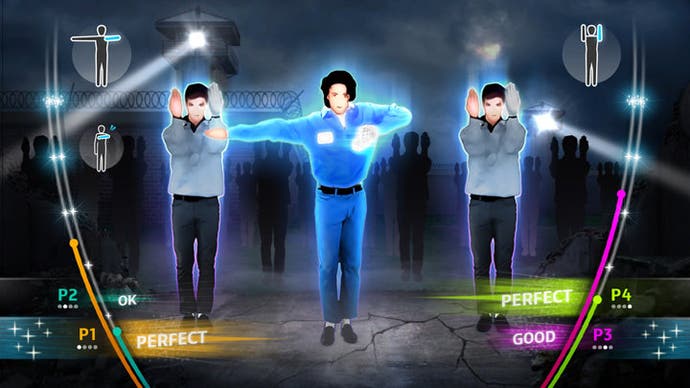
The game features 26 songs (originals only – none of those bargain-bin Just Dance covers) spanning his career from 1979's Off The Wall through to 1997's Blood On The Dance Floor. Thriller, Bad and Dangerous are best represented, with all the obvious dance classics like Billie Jean, Smooth Criminal, Black or White and Don't Stop 'Til You Get Enough in there.
HMV is carrying an exclusive bonus track, the glorious Another Part Of Me, which comes on a separate disc and is sadly not included in my review version. Its omission from the standard release could well be a deal-breaker for fans of George Lucas and Francis Ford Coppola's ludicrous-but-still-amazing 3D movie Captain EO.
Ubisoft has deployed the wonderfully distinctive visual style of Just Dance, dressing up each lead dancer to look as Jacko did in the music video. This sounds like an unpleasant, tacky solution on paper, but the hyper-real visual effect disguises sufficiently for them to convince as the real thing; and the energy and authenticity of the performances make them infectious entertainment in their own right.
No music video or archive material is used at all in-game. Instead, settings for each song are themed around the music video with varying results. The morphing backing-dancers and locations of Black and White and the cheesy B-movie bookending of Thriller are highlights, while the memorable animation of Leave Me Alone is reduced to a boring succession of mocked-up tabloid front pages.


